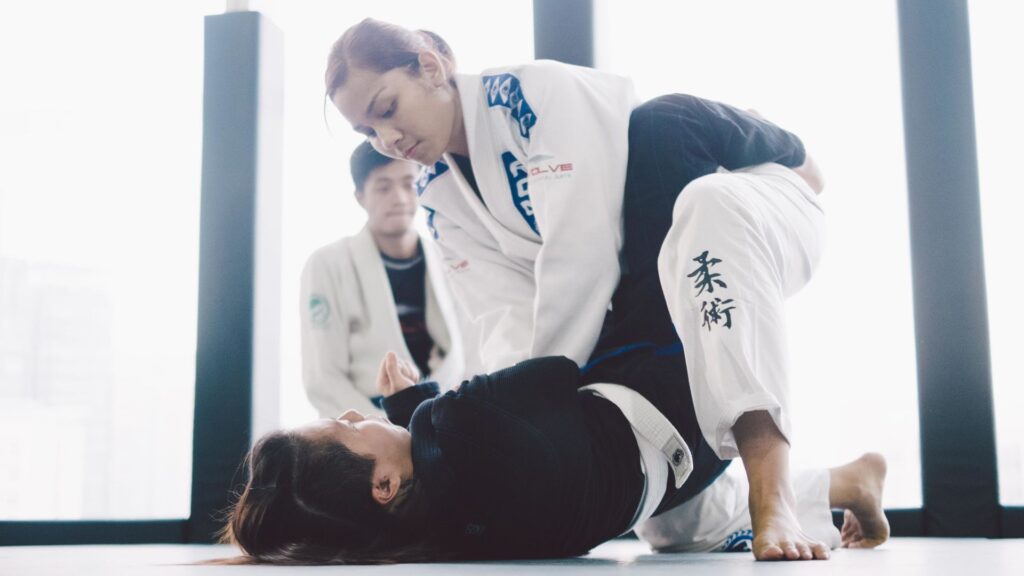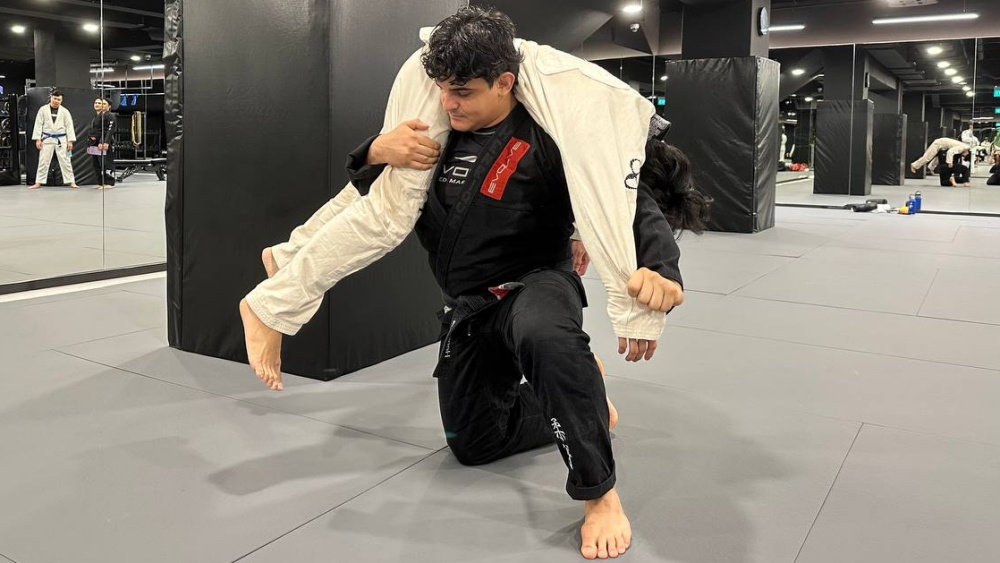“I fear not the man who has practiced 10,000 kicks once, but I fear the man who had practiced one kick 10,000 times” – Bruce Lee
Many years later, this remains as one of the most powerful quotes relating to martial arts and self-defense.
While it is important to know as many ways to defend yourself as possible (and that’s why training Brazilian Jiu-Jitsu is invaluable), it is just as vital to understand and be able to execute these techniques confidently in real-life situations. While Bruce Lee was talking about kicks, we will be discussing chokes that every woman should know.
These chokes aren’t just for women to know, though. Of course, men should know these chokes as well. However, this article was composed with the idea of providing women with a way of being able to defend themselves against a much larger and stronger opponent.
No matter the location, situation, size, or strength or the attacker, these chokes are shared with the idea that a trained female can overcome their opponent and neutralize an immediate threat.
Always remember that the winner of a fight is the person who does not fight at all. If you can escape from a dangerous situation, focus on doing that first. However, if you find yourself in a situation where self-defense techniques are required, these chokes are essential for all females.
Today, Evolve Daily shares Two Brazilian Jiu-Jitsu Chokes Every Woman Should Know.
The Triangle Choke
The Triangle Choke is always one of the most unsuspecting chokes for someone who does not know BJJ. This means it is a perfect choke to apply to an attacker who will in most cases have no mixed martial arts experience.
Also, importantly, this is a choke in which a female can apply from her back. This means that the defender can either use this technique to escape or retaliate in a self-defense situation after being thrown to the ground or pinned. With proper technique, the defender can lock up this submission and force the attacker to go unconscious.
There are many variations of the triangle choke, but we will focus on explaining setting up the triangle choke from full guard. The full guard position is the most realistic in a self-defense situation.
The essentials of a triangle choke are that one of the attacker’s arm must be inside (between) your two legs, and one arm must be outside. It’s likely that in the initial stages of self-defense that the attacker will have both arms between your extended legs in the full guard position.
To set up the choke, use one of your hands to move one of the attacker’s arms out of the way as you transition both of your legs up and over their shoulders. By crossing your ankles in this new position immediately, you can lock the attacker’s neck and their arm. Next, by passing their ‘inside’ arm to the other side of their body, it can make sure this arm is neutralized and therefore unable to strike.
By focusing on controlling the attacker’s head and breaking their posture down with your legs, you can then create space and a new angle to secure the triangle leg position. This is best demonstrated in the Evolve University video above.
To apply the choke, control the attacker’s head and squeeze your thighs. Like many chokes, it takes around just six seconds to put someone unconscious with a triangle choke.
This is an incredibly useful choke and self-defense technique.
The Guillotine Choke
Much like the triangle choke, the guillotine choke is best applied from the full guard position. It can either be initiated after securing the full guard position or after locking up an attacker’s neck before sitting down into full guard (like in the video above).
We’ll focus on explaining how to start the guillotine from the full guard position. Again, if a female is being attacked or threatened, it is likely that the defender will eventually end up on her back. This is especially true when dealing with sudden or surprising attacks in which the defender has no time to defend or escape.
As simple as the guillotine seems, it is most effective when the defender applies the choke using several helpful techniques.
Firstly, the guillotine is most effective when the defender secures full guard. This ensures that you can control the body of an attacker and restrict their ability to inflict damage.
If an attacker places someone on her back, the defender should immediately look to free her legs and cross her ankles behind the back of the attacker. By leveraging your hips up and applying your own weight and force onto the hips of your opponent, you are forcing them to carry your weight. With the attacker on top of you, and a tight full guard, they have lost their ability to posture up (or stand up), and their strength is severely diminished inside this position.
The next step is for the defender to free her hands and arms before applying the choke. Assuming that the person initiating the assault has no background in martial arts, it is likely that they do not understand the importance of controlling the arms and frame of their opponent. Fortunately for the defender, she may be able to swim her arms out of a bad position immediately. If not, it could take 15-30 seconds before being able to separate your arms from the attacker. It’s important to remember to remain calm. Keeping the attacker in the full guard position will also drain his energy and reduce his power. Do not become too tense. You should instead focus on pulling your arms out of a bad position.
With your arms free, now it’s time to apply the choke. Bring one arm up, over, and around the attacker’s neck before placing the forearm (ideally the area closest to the wrist), up to his neck near the Adam’s Apple. As soon as you have secured this position, you can lock the choke up by connecting this hand with your free hand. Now, the arm that was originally free can be used as a lever to apply force. By focusing on raising the elbow, it helps to distribute power and tighten the grip. The finishing touch is to extend your legs while applying the choke from full guard. Generally, if applied correctly, the guillotine choke takes approximately six seconds to render someone unconscious.
Alternatively, this guillotine choke can be initiated from a standing position. This can be much more difficult to apply to an opponent who is ready to attack, and that’s why we primarily focused on the guillotine choke after securing control of the attacker. The concepts and techniques are largely the same, though.
It is important to remember that if you are still standing, there is an opportunity to escape – which should be your first priority.
Watch BJJ World Champion Leandro “Brodinho” Issa’s breakdown of the guillotine choke above, which teaches you how to execute the guillotine choke from both standing and full guard positions.
The world is getting less and less safe, especially for women. With random attacks happening every day, it is important to know how to defend yourself if you were to find yourself being attacked. Don’t wait until it is too late. Take the first step and sign up for a trial class today to start your martial arts journey!
Book your complimentary trial class with our World Champions below!

















